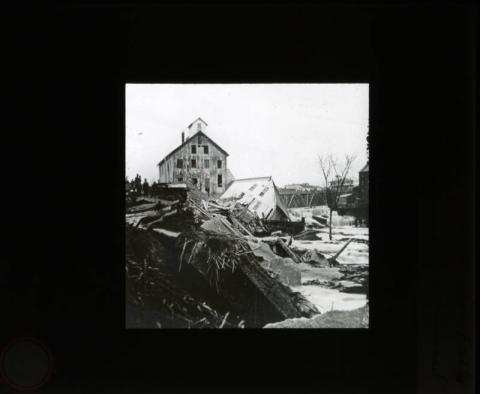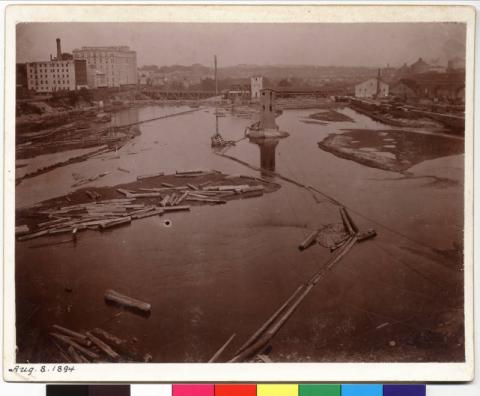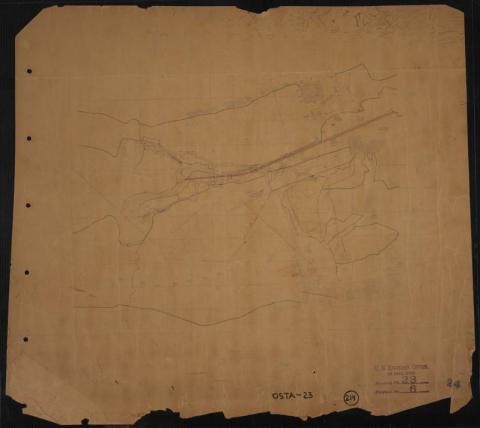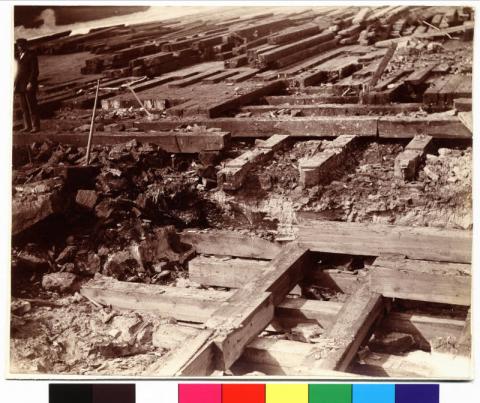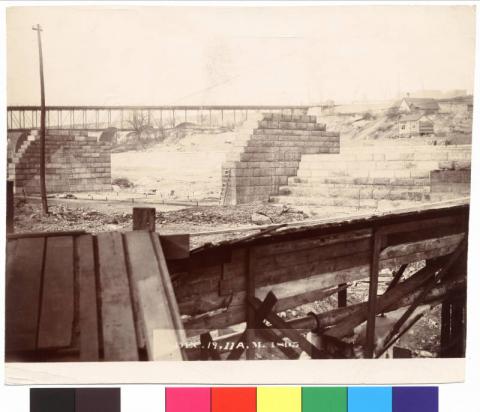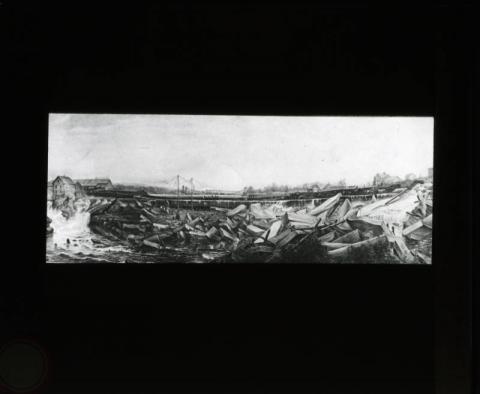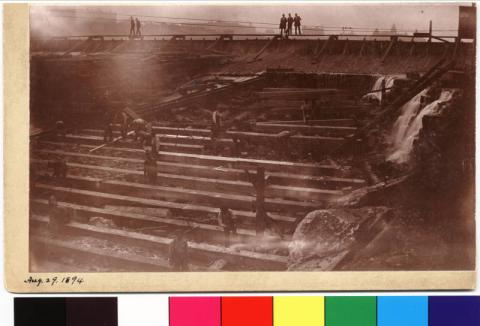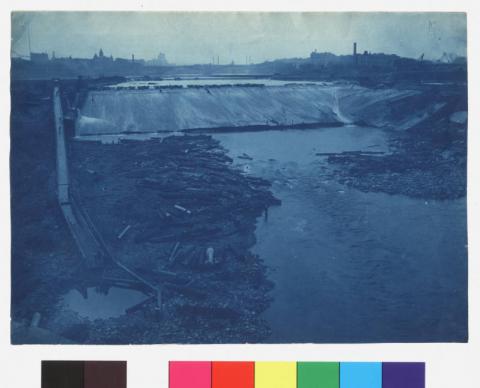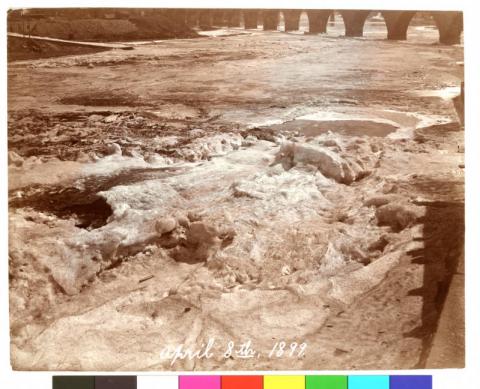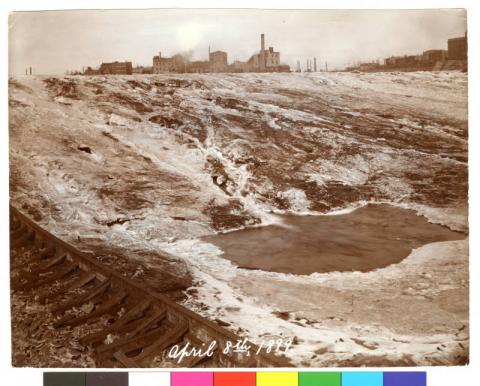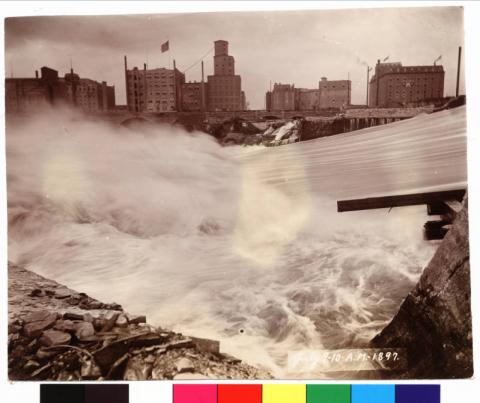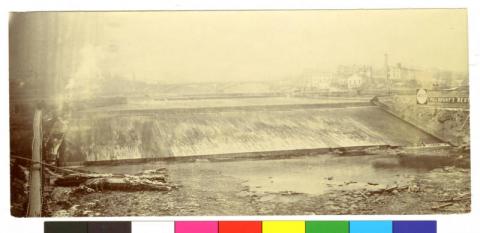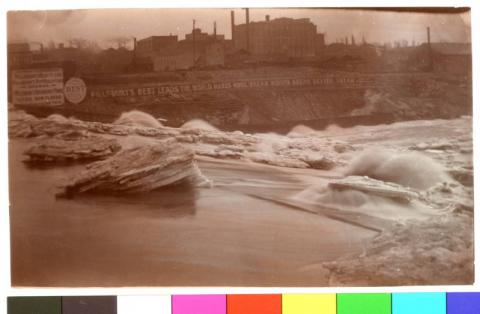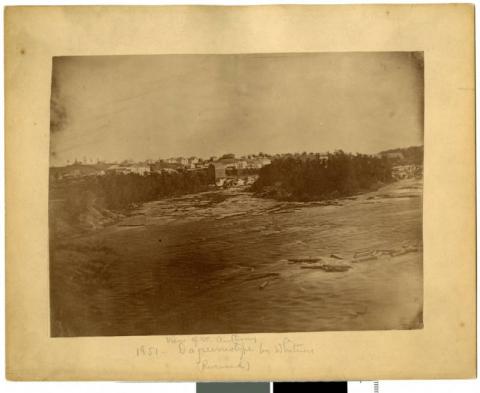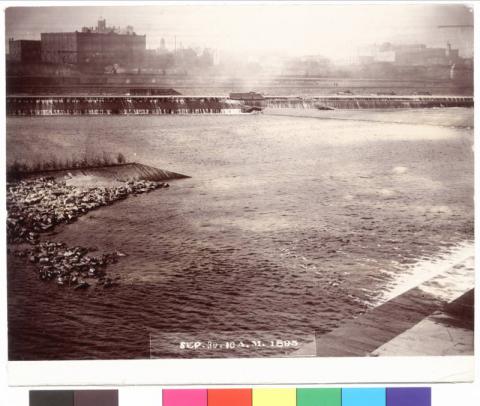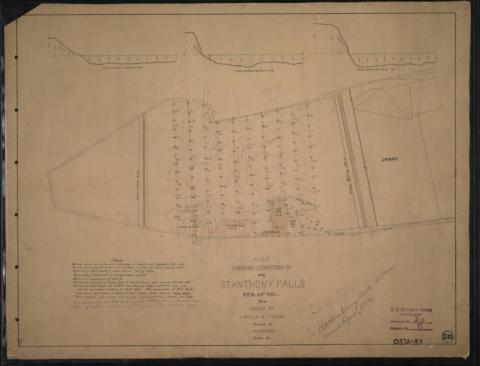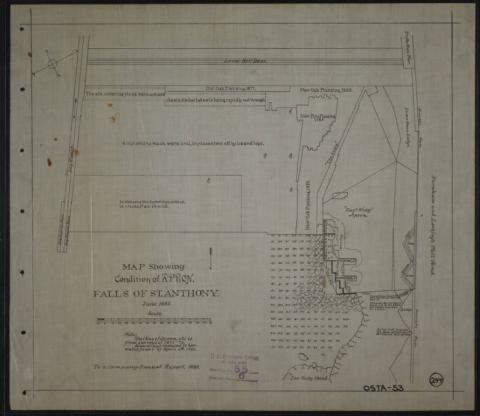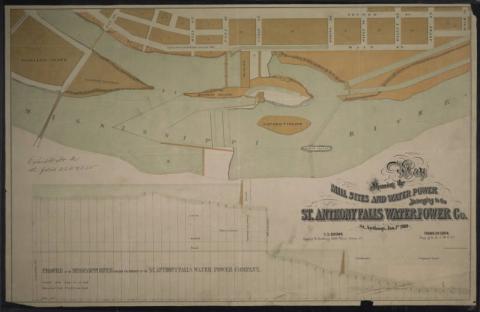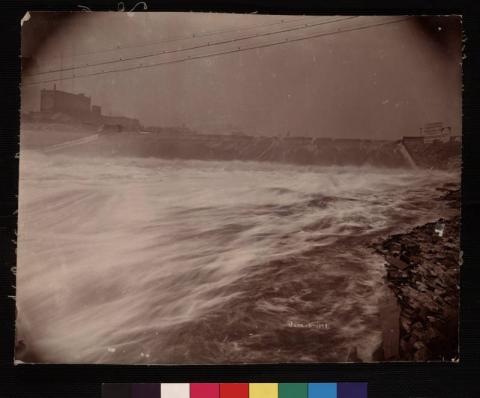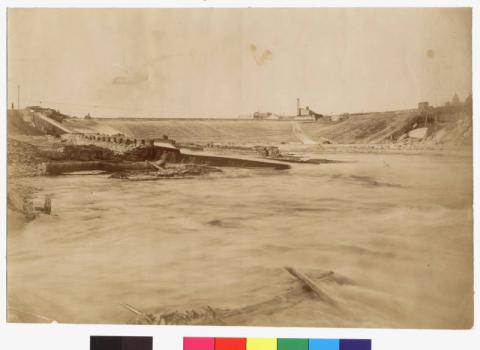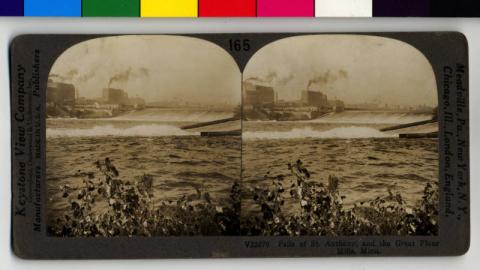Primary Source Set
by Anna Freyberg, Public Programs Intern, Hennepin History Museum
Business and Industry Environment
St. Anthony Falls, the only major waterfall on the Mississippi River, is located in Minneapolis, Minnesota. While the scenic beauty of St. Anthony Falls initially drew tourists and prospective residents, the immense water power quickly overwhelmed tourism as the main function of the falls in the mid-1800s. Once this lucrative power was harnessed, sawmilling and flour milling production on the Mississippi River boomed. The construction of an apron, or a concrete overflow spillway, on the St. Anthony Falls, which was first added in the early 1870s, has played a crucial role in preserving and maintaining the functionality of the falls. The apron was first constructed in 1868 after a tunnel dug underneath the Nicollet and Hennepin Islands collapsed, threatening to destroy the falls altogether.
After several failed attempts to alleviate the damage of the tunnel collapse with timber rafts and temporary dams, the engineer Franklin Cook worked with the U.S. Army Corps of Engineers to devise a more permanent solution to save the falls. Cook’s team received $50,000 and authorization from Congress to preserve the falls and their central contribution to the milling industries. A large timber apron was built to support the falls and prevent further erosion, while a dam at the edge of the waterfall was constructed to ensure constant water levels. The purpose of the newly installed apron was to prevent the falls from eroding and breaking up into rapids, causing them to lose their profitability. The ongoing maintenance of the apron, which could be susceptible to the harsh Minnesota weather, would become the responsibility of the Army Corps of Engineers.
By the 1880s, the falls were running smoothly. With twenty-seven different flour mills, including Pillsbury and the Washburn-Crosby Company (later renamed General Mills) located along the Mississippi River, Minneapolis became the nation’s top flour producer and earned the nickname “Mill City.” In 1885, the water power companies and the City of Minneapolis took responsibility for the falls’ maintenance. In the 1950s and 60s, a series of locks and dams were constructed on the Mississippi River to further secure St. Anthony Falls.
For more information on the history of St. Anthony Falls in Minneapolis, visit the St. Anthony Falls Primary Source Set.
Discussion Questions & Activities
- What is the purpose of an apron? How was it able to preserve the falls?
- What makes St. Anthony Falls unique? Think in terms of geology, economics, history, etc.
- Which important industries in Minneapolis did the water power of St. Anthony Falls make possible?
- Why was Congress willing to give Franklin Cook such a large amount of funding to repair the falls?
- What would have happened if Cook and the Army Corps had not been successful in preserving the power of the falls? Think about and discuss the importance of St. Anthony Falls within Minneapolis’ history.
- Identify all the ways in which the water power of St. Anthony Falls has impacted your life. Think about where you live or what you ate for breakfast. (If you had cereal, what company manufactured it?)
- How many products can you name that were made through the power of St. Anthony Falls?
- Look at the photos from the set and think about how the apron would have been constructed using 1870’s resources and technology. What are your initial reactions? How would the construction processes of the apron be different if it was built today?
eLibrary Minnesota Resources (for Minnesota residents)
"dam." Britannica School, Encyclopædia Britannica, 9 May. 2023. Accessed 3 Oct. 2025.
"Minneapolis." Britannica School, Encyclopædia Britannica, 14 May. 2018. Accessed 18 Jun. 2020.
"Mississippi River." Geography, Gale, 2016. Kids InfoBits Presents. Gale In Context: Elementary. Accessed 18 June 2020.
"Pillsbury Company: Pillsbury A Mill in Minneapolis, Minnesota, c. 1900–1910." Image. Britannica Academic, Encyclopædia Britannica, 8 Feb. 2020. Accessed 18 Jun. 2020.
"spillway." Britannica School, Encyclopædia Britannica, 18 Aug. 2021. Accessed 3 Oct. 2025.
Additional Resources for Research
Anfinson, John O. “St. Anthony Falls: Timber, Flour and Electricity.” in River of History: A Historic Resources Study of the Mississippi National River and Recreation Area, National Park Service, November 22, 2019.
Carroll, Jane Lamm. “Engineering the Falls: The Corps of Engineers' Role at St. Anthony Falls.” U.S. Army Corps of Engineers, Oct. 27, 2015.
Flour Power: The Significance of Flour Milling at the Falls (PDF). Minnesota History Magazine, Spring/Summer 2003.
Flour Power. Season 1: Episode 1 in “Minnesota Experience.” tpt.org, 2018.
Huber, Molly. “St. Anthony Falls Tunnel Collapse, October 5, 1869.” MNopedia, May 10, 2011.
“Minneapolis Flour Milling Boom,” Mill City Museum, Minnesota Historical Society.
St. Anthony Falls Heritage Board. Minnesota Historical Society. 2011.
Published onLast Updated on
